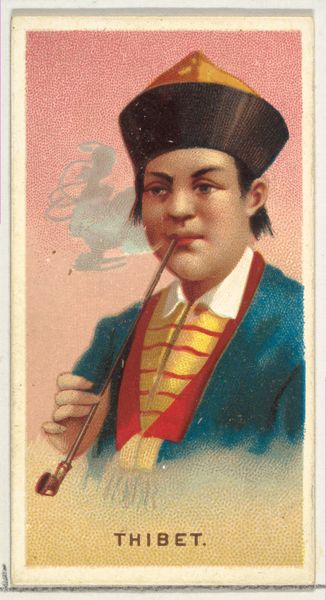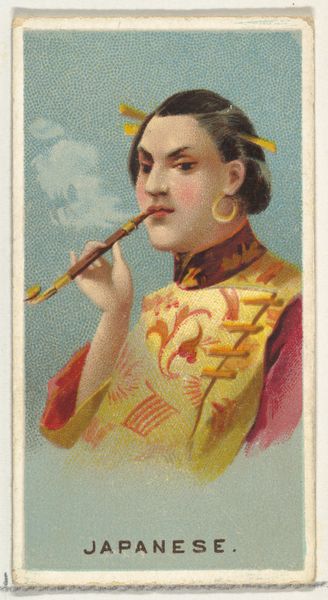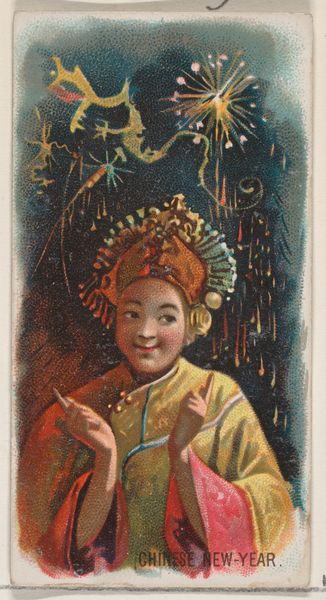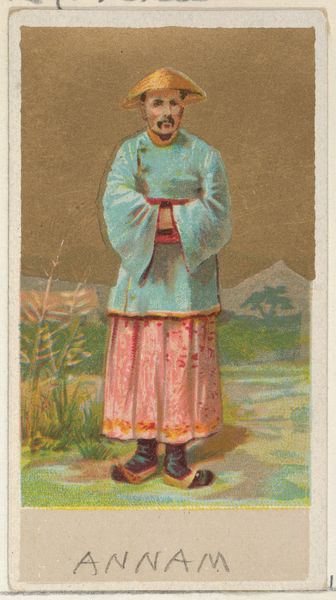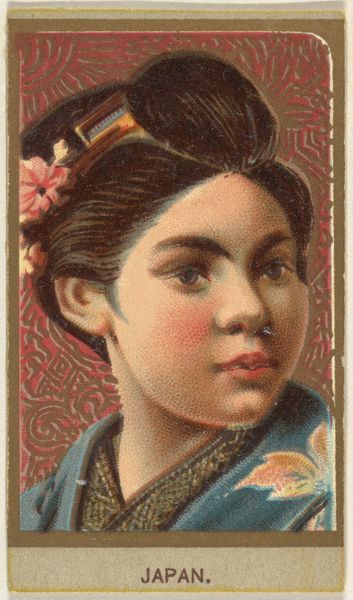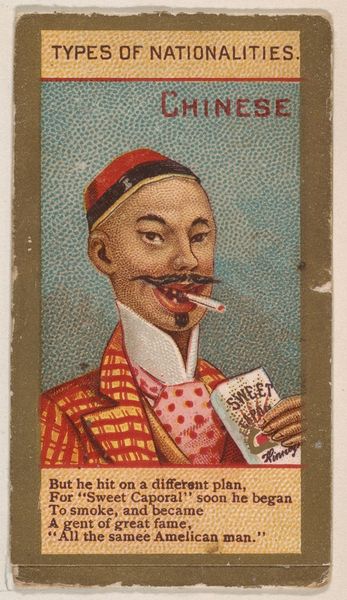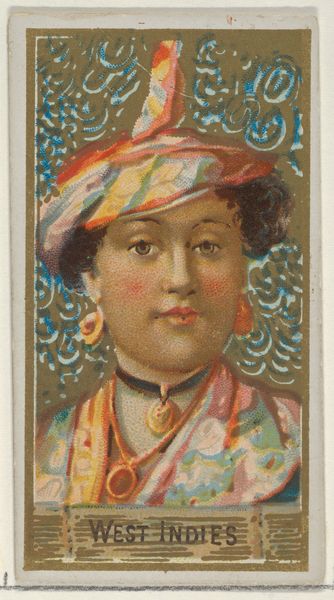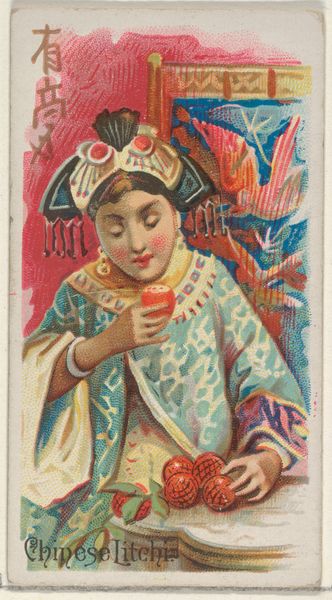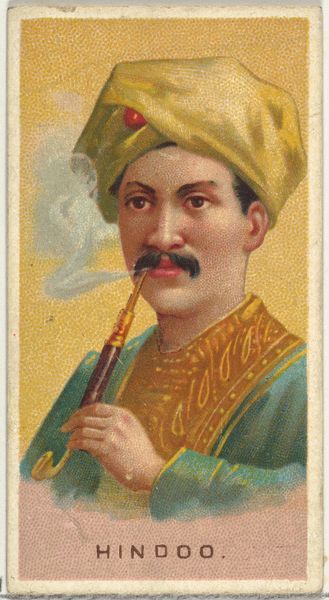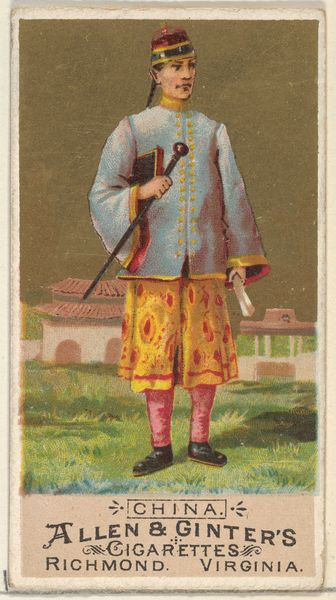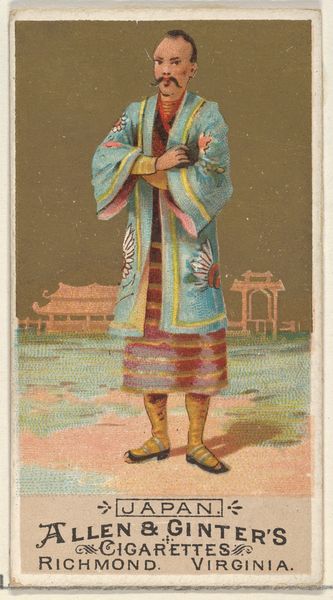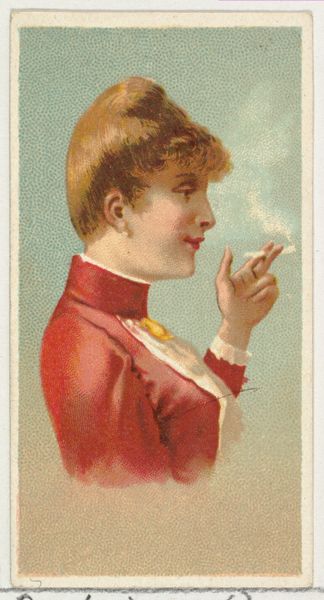
Chinese, from World's Smokers series (N33) for Allen & Ginter Cigarettes 1888
0:00
0:00
graphic-art, print
#
portrait
#
graphic-art
# print
#
asian-art
#
men
Dimensions: Sheet: 2 3/4 x 1 1/2 in. (7 x 3.8 cm)
Copyright: Public Domain
Editor: This little card, "Chinese, from World's Smokers series," produced by Allen & Ginter Cigarettes in 1888, has a sort of ethnographic feel. What do you make of it? Curator: It's crucial to remember the context. Cigarette cards like these were immensely popular. But consider the power dynamics at play: a Western company exoticizing and categorizing people from different cultures. It’s a prime example of Japonisme mixed with, frankly, marketing. Editor: Japonisme? The influence of Japanese art? Curator: Precisely. The aesthetic – the flattened perspective, the focus on a single figure – owes a clear debt to Ukiyo-e prints, but applied here to promote a product, imbuing it with a veneer of sophistication and worldly knowledge. It catered to a consumer base eager to appear cosmopolitan. Look at how the "Chinese" man is presented. What assumptions might contemporary viewers make about him based solely on this image? Editor: That’s an excellent point. He’s exoticized, certainly. His clothing, his pipe...it's all very staged. And, packaged in this way, perpetuates a one-dimensional view. Curator: Exactly. These cards shaped public perception, and not always for the better. This artwork illustrates how commercial art became an agent in constructing and circulating cultural stereotypes, subtly reinforcing a sense of Western superiority through consumerism. Editor: I see what you mean. I had viewed it simply as an antique portrait, but now, the socio-political dimensions are apparent. I didn't realize how potent of a role this form of seemingly innocent marketing could be. Curator: Recognizing that potent role *is* understanding the power of art within its historical and cultural context.
Comments
No comments
Be the first to comment and join the conversation on the ultimate creative platform.
